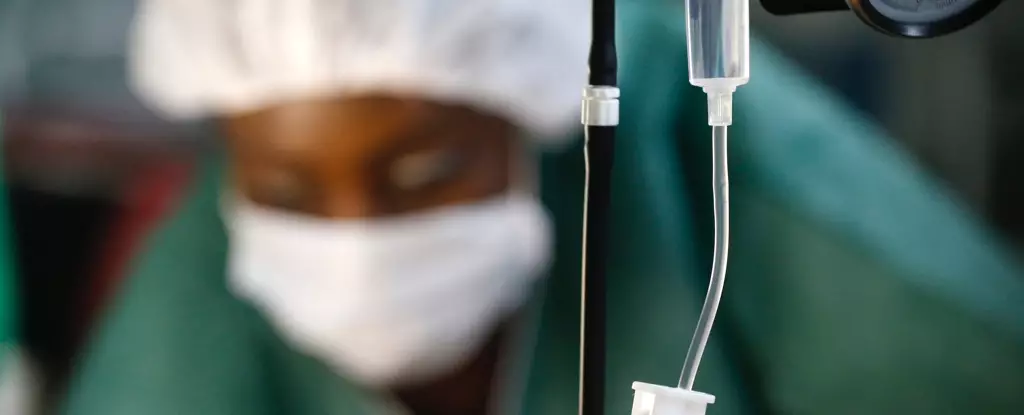In recent weeks, the south-western region of the Democratic Republic of Congo (DRC) has been shaken by the sudden onset of a mysterious disease that has resulted in the deaths of at least 67 to 143 individuals within a mere two-week timeframe. This outbreak is marked by symptoms typically associated with infections—fever, headache, cough, and anaemia—yet the absence of a clearly defined cause raises alarm bells among health officials and the international community. Epidemiologists have noted that vulnerable populations, particularly women and children, are bearing the brunt of this health crisis. The urgency for answers is palpable, as DRC health authorities scramble to identify the agent responsible for this deadly outbreak.
Challenges in Detecting the Culprit
Determining the source of such an outbreak is fraught with difficulties. To begin with, local health officials are likely to consider diseases endemic to the region, such as malaria, dengue fever, or Chikungunya. However, the complexity of the situation is exacerbated by the limitations of diagnostic testing infrastructure in low-income countries like the DRC. Many laboratories are only equipped to handle common pathogens, which constrains their ability to explore the full landscape of potential infectious agents. Furthermore, the logistical challenges associated with sample collection and transportation to specialized laboratories for more advanced testing, such as gene sequencing, cannot be underestimated.
In a world driven increasingly toward global interconnectedness, the international sharing of biological samples remains a contentious issue. Many countries express concerns that benefits derived from collaborative research and sample sharing are not equitably distributed. The implication is clear: delays in testing and lack of access to advanced diagnostics could result in a failure to identify the outbreak’s origin swiftly, prolonging the crisis and jeopardizing public health.
Establishing the true scale of the outbreak is another monumental challenge faced by health authorities. Critical gaps exist within the healthcare system that further obfuscate reliable data. Many infected individuals may be unaware of their condition or reluctant to seek care, especially in remote or under-resourced areas where healthcare facilities are scarce and often understaffed. For context, the DRC has fewer than two doctors per 10,000 people, a stark contrast to countries like the UK, which boasts over 31 doctors per 10,000 people. Inadequate healthcare availability means that not all cases are detected, reported, or even treated—further complicating accurate assessments of the outbreak’s severity.
Moreover, the timeframe between infection and diagnosis can be protracted, creating a significant lag before health authorities are made aware. This delay in reporting can stifle effective disease control measures, leaving communities at increased risk of widespread transmission of the outbreak.
The emergence of new infectious diseases is not a rarity; rather, it has become an alarming trend influenced by factors such as climate change, urbanization, and deforestation, which facilitate the transfer of pathogens from animals to humans. Current global surveillance systems are notably fragmented, particularly in poorer nations where underfunded, understaffed programs struggle to detect diseases effectively. This scenario is deeply concerning; it highlights a vulnerable point in our global health infrastructure, making us susceptible to catastrophic outbreaks that could potentially evolve into pandemics.
Current initiatives spearheaded by the World Health Organization (WHO), such as the 7-1-7 initiative, aim to enhance disease surveillance by encouraging quicker detection and response to outbreaks. This initiative sets ambitious timelines: detecting outbreaks within seven days, reporting them to public health authorities within one day, and initiating a response within an additional seven days. While the initiative is well-intentioned, its efficacy remains questionable, particularly in light of the rapid pace at which certain diseases advance.
To truly address the shortcomings in disease surveillance and response, a collective effort to better coordinate existing activities and systems is required. The WHO’s Integrated Disease Surveillance and Response (IDSR), implemented largely in Africa over the past two decades, offers a framework for improvement; however, feedback indicates a need for enhanced technological support, financial backing, and streamlined data-sharing protocols.
In addition to these initiatives, collaborative networks like the International Pathogen Surveillance Network emphasize the importance of cross-sectoral cooperation—from human health to environmental factors and animal health. Collaborative efforts can pave the way for a more unified approach to disease detection and control.
Ultimately, if we do not strengthen our global disease surveillance systems, we may find ourselves facing the next pandemic with insufficient readiness, potentially long after it is already too late to take effective action. It is incumbent upon us to recognize the urgency of this crisis and act decisively to foster preparedness, resilience, and equity in global health.


Leave a Reply